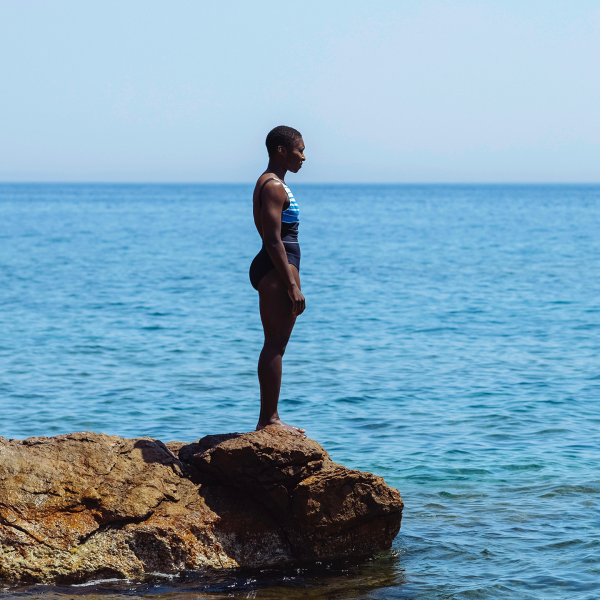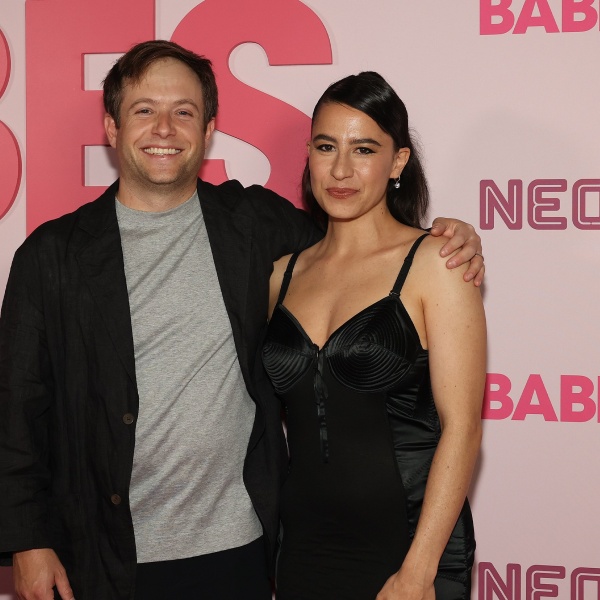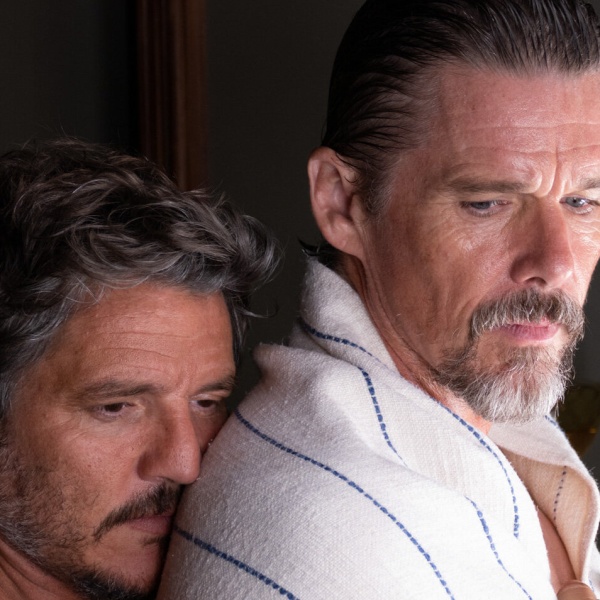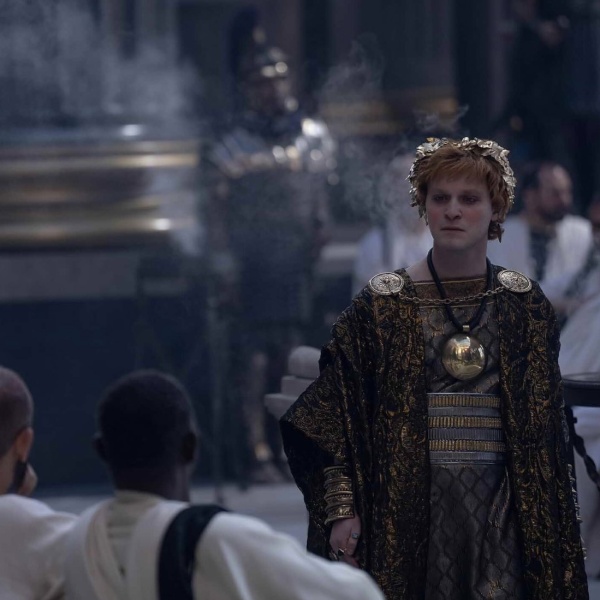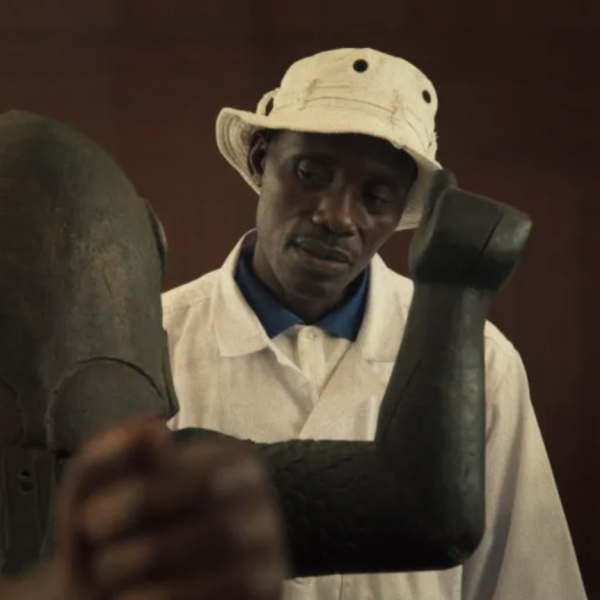In the final moments of Tom Harper’s “Heart of Stone” (a film that, yes, hinges on a character named “Stone” and her pursuit of a key piece of tech named “The Heart”), the Netflix spy caper edges as close as it ever does to a joke. As the various players in the film race to possess the powerful artificial intelligence known as “The Heart” (told you), the tech goes offline, inspiring one character to tell another that the best course of action is to turn it off, then back on again. Ah, if only.
As A.I. chatter starts to consume a fractured Hollywood, it’s only natural that such concerns have already made their way into our movies. Earlier this summer, even Tom Cruise took it on with his “Mission: Impossible — Dead Reckoning Part One,” which follows super-spy Ethan Hunt as he attempts to steal back an all-powerful A.I. that threatens the safety of the world. Netflix isn’t too far behind the ball, as “Heart of Stone” similarly follows a super-spy (in this case, played by Gal Gadot) as she attempts to steal back an all-powerful A.I. that threatens the safety of the world.
One key difference between the films: While Christopher McQuarrie’s movie could be read as a diatribe against the evils of streaming and algorithmic programming, Harper’s feature scans as the exact opposite.
The film kicks off at a glitzy, Italian Alps-set party hotel and casino, populated almost exclusively by the worst people you’ve never met, only one of whom is a nefarious international arms dealer. And how do we know he’s an arms dealer? We’re told it, as MI6 specialist Bailey (Paul Ready) announces, ostensibly to clue in the rest of his spy team via their communications devices (read: the sort of Bluetooth earpieces your grandfather enjoyed a decade ago) that “our arms dealer’s on the move!” when said arms dealer is, indeed, on the move.
It’s the first of many moments in the film that feel engineered for Netflix’s “second screen” audiences — viewers who are watching the film while also tooling away on their smartphones or other “screens,” the kind of passive viewers who might not actually see what’s happening in the film, and might only realize what’s happening if they hear it too — which feels about as depressing as it sounds. There’s a difference between shoddy exposition (of which the film, written by Greg Rucka and Allison Schroeder, also has plenty) and telling your audience every beat because you know they’re not paying full attention. Again: as depressing as it sounds.
As the operation unfolds, we meet the rest of the team, including cool-as-a-cucumber Theresa Yang (Jing Lusi) and buttoned-up leader Parker (Jamie Dornan). Along with Bailey, the team is tight, and they’ve somewhat recently brought a new member into their fold. We’re meant to believe (at least, initially) that Rachel Stone (Gadot) is a green MI6 agent, a tech wonk who is not cut out for field work, a newbie relegated to the sidelines while the actual spies kick butt all around her.

In actuality, Rachel is a deeply experienced super-agent who works for the shadowy (but righteous! really righteous!! we promise!!!) super-agent super-group The Charter. She’s been embedded in MI6 under this flimsy cover for nearly a year, and even her MI6 team — top spies, allegedly — haven’t yet realized. Considering the four-member group spends their debriefing time chatting about issues of international security at local fish and chips shops, perhaps they aren’t as top-notch as we’ve been led to believe.
As the international arms dealer/Italian Alps nightmare party mission goes awry, the audience is treated to revelations of Rachel’s real role in this story and the introduction of our seeming No. 1 baddie, hacker Keya (Alia Bhatt, who sells a role that is thinly written to the point of insult), who winks her way through the casino and the mess that follows. Soon enough, Rachel’s real identity is revealed, new villains emerge, and The Heart becomes a tangible item that threatens the entire world. First up, though: double-crossing.
The Charter, for all its super-spy styling, is victim to wonky naming, as each of the four sections of the group (why four? who knows) are named for a card suit — Rachel is part of The Hearts, her own title is 9 of Hearts — with their leader serving as “The King” of said group, even though Rachel’s own King also goes by “Nomad” (at least she’s played by Sophie Okonedo). This seems like a very easy way to confuse everyone and limit the extent of how many people you can actually have working for The Charter at a given time, another bit that probably sounded cool and makes no sense when actually executed.
We’re told The Heart can see all, and The Charter uses it to a) predict horrible acts they might help stop and b) plot the best course of action when they’re actually on the ground thwarting said horrible acts. If it sounds like a silver bullet intelligence tool, eh, kind of, but what it really allows for is the always-entertaining Matthias Schweighöfer (he’s “Jack of Hearts,” of course) to swirl his arms around incessantly while pulling up and pulling out all sorts of “Minority Report”-esque, room-sized graphics. If this is what the majority of the film’s CGI budget went toward, well, it’s not entirely for naught.
And speaking of CGI. The film’s action sequences are beset by jittery, incoherent lensing — someone, please, hold a camera steady for even 30 seconds at a time, we beg you — and slightly more legible hand-to-hand combat scenes that lean on incessant bone-crunching sound effects to telegraph the fact that what we’re seeing (or, more precisely, not seeing) is indeed brutal and badass. The film does, however, make off with one excellent car chase sequence that takes the team through, up, around, and over the streets of Lisbon.

That sequence hints at some of the possibilities buried beneath the layers and layers of unoriginal thinking heaped on “Heart of Stone.” So too does the double agent act at the heart (sorry) of the story, which pushes Gadot into layers of sad-eyed restraint that do feel unique to this film and this role. The “Wonder Woman” star is undoubtedly a skilled action star — and, never fear, the actress gets plenty of chances to show off that side, even in all those fuzzy sequences — but “Heart of Stone” makes brief room for actual emotion to seep through.
Even that is tempered by repeated statements about it — and enough mentions of “The Heart,” i.e., “We’ve lost The Heart!” to make attentive audiences titter — but there is indeed something heartfelt here, if only in spurts. Not to worry: The film, of course, sets up for a sequel or two, another franchise for the algorithm to chew up, more artificial entertainment to consume, another screen to watch. Next time, we humbly ask, can we get a little more human?
Grade: C-
“Heart of Stone” starts streaming on Netflix on Friday, August 11.

